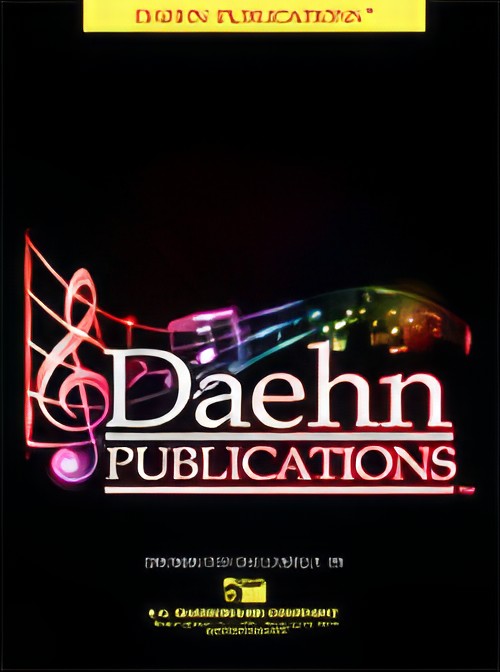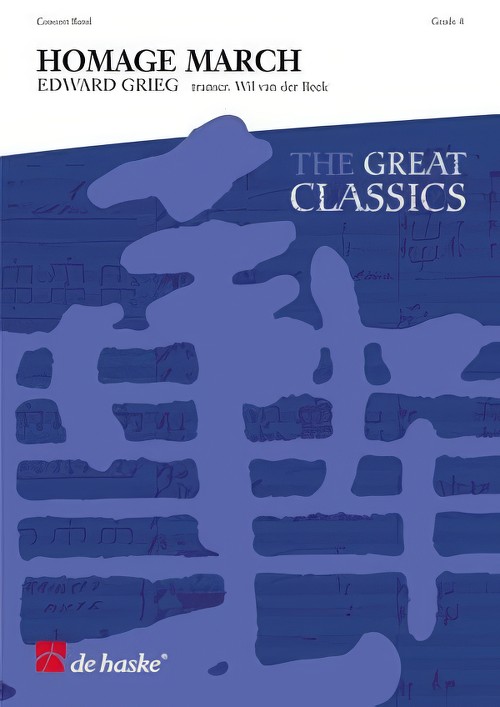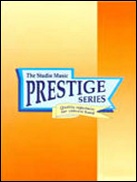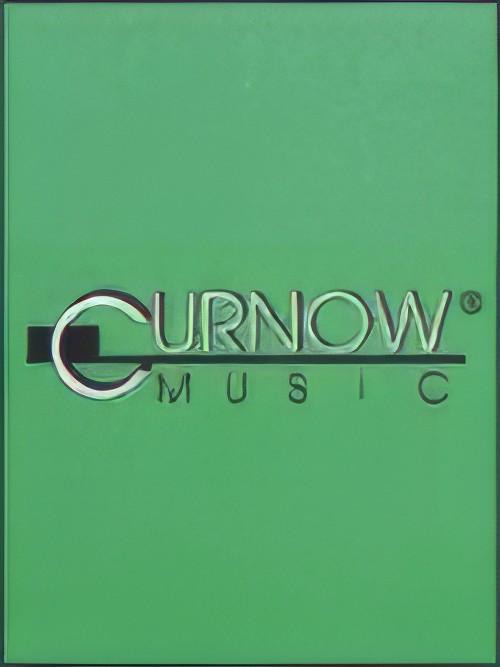Results
-
 £60.00
£60.00Derbyshire Cavalry Marches (Concert Band - Score and Parts) - Haydn, Joseph - Hash & Walters
Haydn wrote these marches during his second trip to London in 1794-95. The original autograph is titled "Two Marches Composed by J. Haydn for Sir Henry Harpur... to the Volunteer Cavalry of Derbyshire, embodied in the year 1794". Scored for the typical military band of the time, the instrumentation included a trumpet, two horns, two clarinet, two bassoons and a serpent (a curved bass instrument played with a cupped mouthpiece). Percussion parts would have been added by the regimental drum major and played by soldiers, not regular musicians. Due to a lack of printed marching books at the time, selection had to be short to facilitate easier memorisation. In this arrangement for modern concert band, the marches have been transposed from the original keys to Bb and F Major. Percussion parts have also been added by the arrangers and can be used at the director's discretion. Though these marches have been scored with the intermediate level band in mind, the integrity of the originals have been maintained, making them of interest to musicians and music students alike, at all levels.
Estimated dispatch 7-14 working days
-
 £104.99
£104.99Homage March (Concert Band - Score and Parts) - Grieg, Edvard - Van der Beek, Wil
Along with the movement In the King's Hall, The Homage March from Act III of Sigurd Jorsalfar remains one of the most popular Scandinavian pieces of classical music. This arrangement has, once again, has been skilfully crafted by Wil van der Beek for a younger Concert Band and will be a popular addition to any concert.Duration: 9:00
Estimated dispatch 7-14 working days
-
 £41.58
£41.58A World Holiday Celebration (Concert Band - Score and Parts)
Featuring music celebrating Christmas, Hanukkah, Kwanzaa and Ramadan, "A World Holiday Celebration" is a unique medley for the concert band. Programmable in any educational setting, the arrangement features melody and ethnic percussion from multiple cultures celebrating the holiday season. Beginning with an introduction based on "We Wish You A Merry Christmas", the arrangement continues with a setting of "Oh Hanukkah" featuring the saxophones. "Sounds of Ramadan" follows representing cultures of the middle east. An African percussion ensemble serves as the accompaniment for Kwanzaa, a chant featuring the seven principles of the holiday celebration. The winds return with "We Wish You A Merry Christmas" as the entire percussion section continues to a very exciting finish. This is the perfect ending for your holiday concert as your ensemble brings together the entire community in celebration.
Estimated dispatch 7-14 working days
-
£89.99
Band Fever (Concert Band - Score and Parts)
Modern wind music in the style of the great Big Bands was the model for the composition Band Fever by Otto M. Schwarz. It was written on commission of the prestigious South Tyrolese concert band, Symphonic Winds. The piece features two soloists, one saxophone and one flugel. Rhythms like Hip Hop Style and Double Samba support a catchy melody, which is later taken up by the full band, forming the basis for the above-mentioned soloists' improvisations. A unique work in the world of wind music, Band Fever allows both soloists and conductor to display individuality and creativity. It is especially suitable as an opener of the light part of a concert, or as a feature number for special soloists in the orchestra. 04:30
Estimated dispatch 7-14 working days
-
 £19.95
£19.95CAMBRIAN SUITE (Prestige Concert Band Extra Score) - Ball, Michael
Extra Score. This suite - originally a brass band work - was commissioned jointly by the Black Dyke Band and the Brass Band Heritage Trust. The composer later made this version for concert band. The work is intended to be played without a break but divides naturally into three sections. Each section is based upon a traditional Welsh melody treated in free variation manner, respectively Gwyr Harlech (Men of Harlech), Suo-Gan (Cradle Song) and Codiad Yr Hedydd (The Rising of the Lark). There is a momentary reference to Yr Deryn Pur (The White Bird) at the end of the second section. (Grade 4) Performance time: 12:00 Recorded on Polyphonic QPRM152D MOSAIC: Great British Music Vol. 13
Estimated dispatch 7-14 working days
-
 £99.95
£99.95CAMBRIAN SUITE (Prestige Concert Band Set) - Ball, Michael
Score and Parts. This suite - originally a brass band work - was commissioned jointly by the Black Dyke Band and the Brass Band Heritage Trust. The composer later made this version for concert band. The work is intended to be played without a break but divides naturally into three sections. Each section is based upon a traditional Welsh melody treated in free variation manner, respectively Gwyr Harlech (Men of Harlech), Suo-Gan (Cradle Song) and Codiad Yr Hedydd (The Rising of the Lark). There is a momentary reference to Yr Deryn Pur (The White Bird) at the end of the second section. (Grade 4) Performance time: 12:00 Recorded on Polyphonic QPRM152D MOSAIC: Great British Music Vol. 13
Estimated dispatch 7-14 working days
-
£84.99
Discover the Band! (Concert Band - Score and Parts)
Festive music, tight rhythms, fanfares and a musically emotional central section - these are the essential ingredients of Discover the Band! This composition by Gilbert Tinner presents the concert band in various ways, exploring every facet of it's unique sound. Let your audience discover the band with its extensive variety of sounds and styles! 04:00
Estimated dispatch 7-14 working days
-
 £18.95
£18.95HEROIC MARCH (from Epic Symphony) (Prestige Concert Band Extra Score) - Fletcher, Percy - Sparke, Philip
Extra Score. Last movement of the 1923 classic brass band contest piece, which adapts perfectly for concert band! Performance time 5'20" Recorded on QPRM153D WIND BORNE (Great British Music for Wind Band Vol.14)
Estimated dispatch 7-14 working days
-
 £94.95
£94.95HEROIC MARCH (from Epic Symphony) (Prestige Concert Band Set) - Fletcher, Percy - Sparke, Philip
Score and Parts. Last movement of the 1923 classic brass band contest piece, which adapts perfectly for concert band! Performance time 5'20" Recorded on QPRM153D WIND BORNE (Great British Music for Wind Band Vol.14)
Estimated dispatch 7-14 working days
-
 £68.99
£68.99JUMPIN' AT THE SWING TRAIN (Concert Band) - Bulla, Stephen
Authentic Big Band swing style music for the concert band! You know this one will be a crowd pleaser, and SO much fun to play! Stephen Bulla works his magic with the great Jazz sounds of the 40s and 50s in such a way that your band will be able to put it together and make it happen. Lots of great jazz style articulation and harmonic considerations ensure that your students are doing more than just playing the piece. They are learning Big Band Jazz style interpretation in the bargain, and loving it as they do. This is a great opportunity to study the historical American roots of Jazz! Duration: 2:21 American Grade 3
Estimated dispatch 7-14 working days
